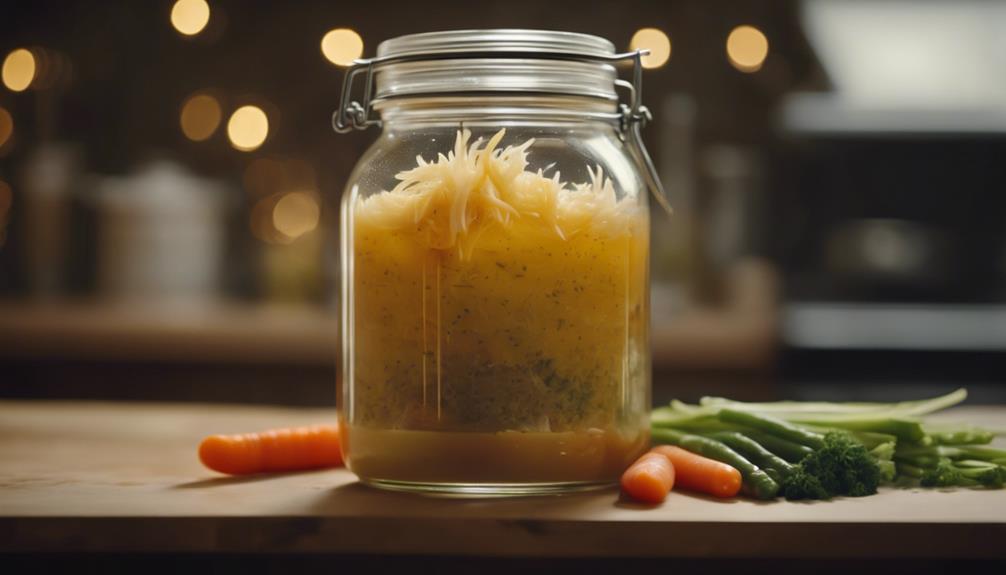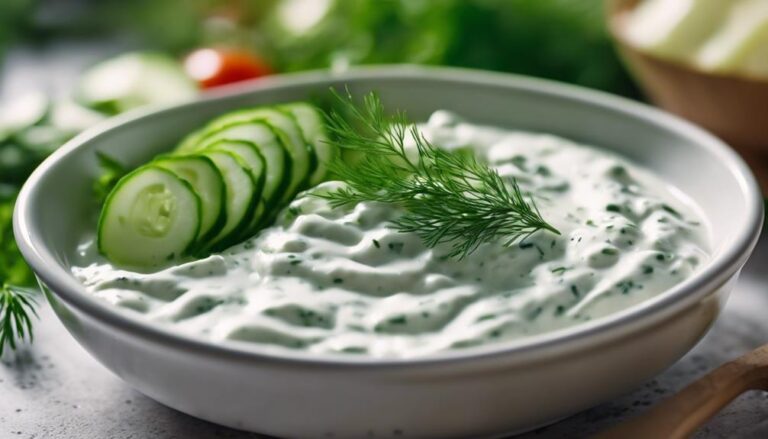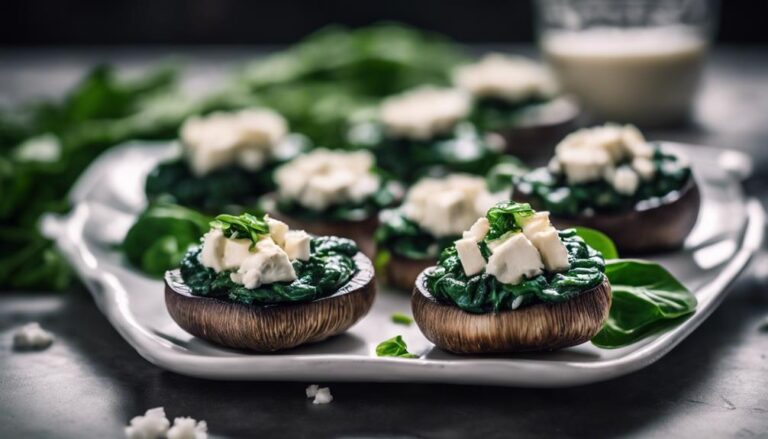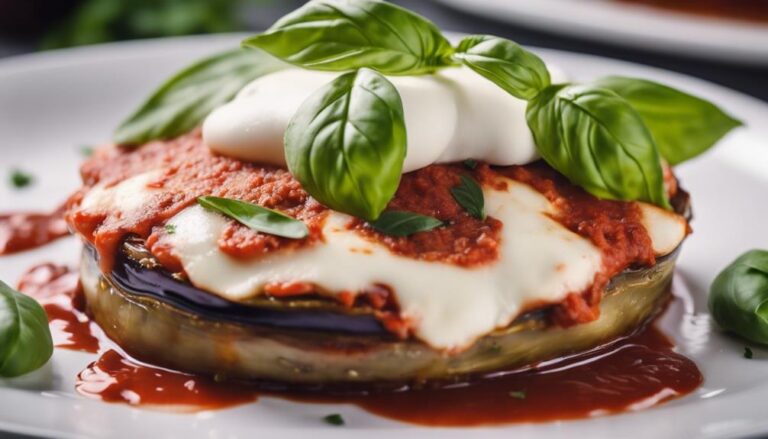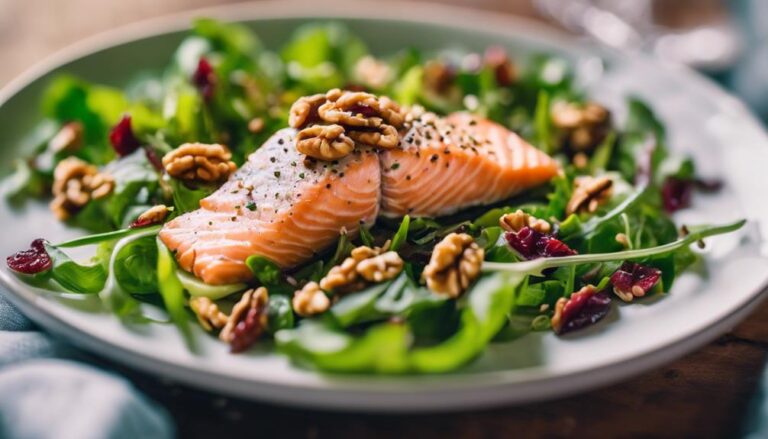Sous Vide Chicken and Vegetable Broth
For a high-quality chicken and vegetable broth, use sous vide cooking. This method guarantees precise temperature control, which enhances flavor extraction. You won't need to watch it constantly, offering convenience. The broth ends up visually stunning. It's worth exploring this technique for superior results.
What You Will Learn Here
- Sous vide method ensures precise flavor extraction from chicken and vegetables.
- Maintains nutrients and enhances taste with controlled temperature cooking.
- Produces clear and flavorful broth without the need for straining.
- Time-efficient process with minimal supervision for consistent results.
- Yields visually appealing and rich broth without compromising on clarity.
Broth's Evolution: A Brief Overview

Broth's development spans centuries, evolving from a basic nourishing liquid to a culinary staple.
Traditional methods of broth-making involved simmering a mix of meat, bones, and vegetables to extract flavors and nutrients.
The incorporation of modern techniques like sous vide cooking has further refined the process, resulting in broth with enhanced taste and preserved nutritional value.
Broths Historical Origins
The historical origins of broths trace back to ancient civilizations like the Greeks and Romans, establishing a culinary tradition rich in nourishment and healing properties. Initially, broths were simple concoctions, often made with ingredients like chicken and vegetables, valued for their ability to provide sustenance and remedy various ailments.
Over time, broths evolved into more complex recipes, incorporating a wide range of flavors and ingredients. The use of chicken in broths dates back to ancient times when it was believed to possess healing properties. Various cultures developed their own versions of chicken-based broths, each reflecting unique culinary traditions and regional influences.
The tradition of making broths has endured through the centuries, with modern variations continuing to captivate palates worldwide.
Modern Broth Variations
Incorporating a diverse array of ingredients such as lemongrass, ginger, and miso has propelled modern broth variations into a realm of unique and vibrant flavors. Chefs are experimenting with fusion broths, blending traditional recipes with global influences like Mexican, Japanese, and Thai elements.
Contemporary broth techniques prioritize clarity and depth of flavor, accomplished through meticulous ingredient selection and cooking methods. The integration of sous vide technology in modern broths guarantees precise temperature control, extracting maximum flavor from ingredients like Sous Vide Chicken.
Additionally, broth innovation is embracing sustainability by utilizing vegetable scraps, mushroom stems, and herb stalks to create rich, eco-friendly stocks. This evolution in broth variations reflects a commitment to both flavor excellence and environmental consciousness.
Nutritional Benefits of Broth
Exploring the evolution of broth, one can uncover the nutritional benefits that have contributed to its enduring presence in culinary traditions worldwide. Chicken stock, a popular type of broth, is rich in collagen, supporting joint health, skin elasticity, and gut health.
The simmering process involved in making chicken stock helps release essential nutrients and minerals from bones and vegetables, making them more easily absorbed by the body. Low in calories, chicken stock serves as a good source of hydration and electrolytes.
Regular consumption of chicken stock can boost the immune system and aid in digestion. As a staple in traditional diets for centuries, chicken stock is esteemed for its nourishing and healing properties, making it a valuable addition to one's culinary repertoire.
Key Broth Components
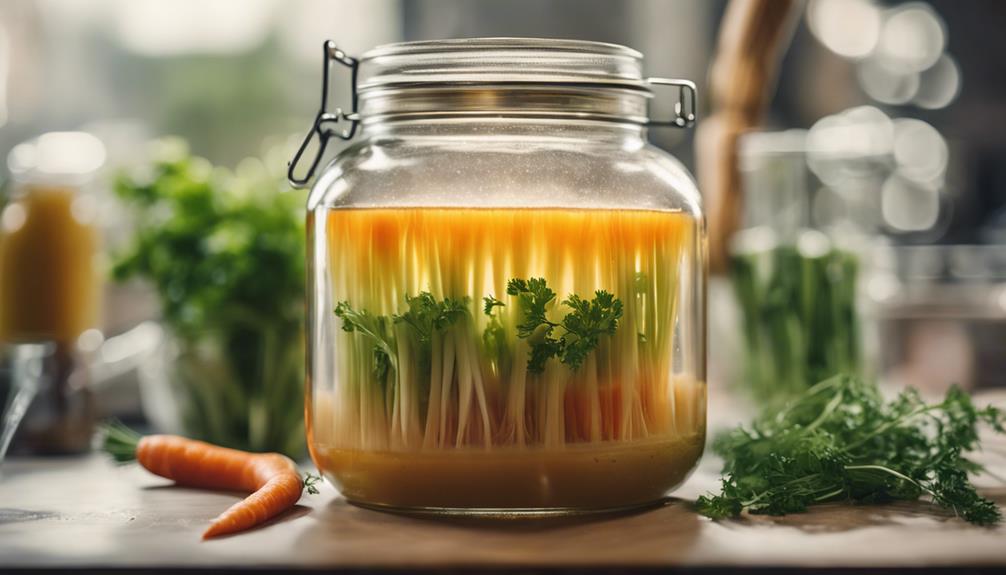
When preparing sous vide chicken and vegetable broth, essential components like chicken bones, carrots, celery, onion, and water are crucial to achieve a rich and flavorful result. These components work together harmoniously in the water bath, extracting maximum flavor and nutrients from each ingredient. Here are key components to take into account:
- Chicken Bones: The bones provide the base flavor and nutrients essential for a robust broth. They release collagen during the cooking process, resulting in a velvety texture and a depth of flavor.
- Vegetables (Carrots, Celery, Onion): These aromatic vegetables contribute layers of flavor, natural sweetness, and complexity to the broth. They also add essential vitamins and minerals, enhancing the nutritional profile of the broth.
- Water: Acting as the medium for flavor infusion, water helps extract all the goodness from the bones and vegetables, resulting in a well-rounded and satisfying broth.
Broth Variations to Explore
Experiment with different vegetable combinations such as leeks, parsnips, and turnips to tailor the flavor profile of your broth.
Enhance the aroma and taste by adding fresh herbs like thyme, parsley, and bay leaves.
For a richer broth, consider roasting the vegetables before incorporating them into the sous vide cooking process.
Savory Mushroom Broth Recipe
To create a robust and aromatic Savory Mushroom Broth, start by combining earthy mushrooms, aromatic onions, pungent garlic, and fragrant herbs in a simmering pot. This flavorful broth serves as a versatile base for enhancing a variety of dishes, adding depth and umami to your culinary creations. Here are three key steps to craft a delicious Savory Mushroom Broth:
- Select the Right Mushrooms: Opt for a combination of mushrooms like cremini, shiitake, and porcini to impart a complex and rich flavor profile to your broth.
- Simmer Slowly: Allow the ingredients to simmer gently to extract all the savory goodness from the mushrooms, onions, garlic, and herbs.
- Strain Carefully: Strain the broth meticulously to achieve a smooth and clear liquid, ready to elevate your soups, stews, risottos, and sauces.
Chicken Noodle Soup Recipe
Begin a gastronomic adventure by delving into different broth variations while creating the comforting Chicken Noodle Soup recipe. Utilizing sous vide cooking techniques, you can elevate the flavors and textures of this classic dish. Consider these variations to enhance your soup:
- Sous Vide Chicken Broth: Prepare a rich and flavorful broth by sous viding the chicken carcass with aromatics like onions, carrots, and celery at 165°F for 12 hours.
- Asian-inspired Broth: Infuse your broth with ginger, lemongrass, and star anise for a fragrant and exotic twist that pairs beautifully with the tender sous vide chicken.
- Roasted Vegetable Broth: Sous vide root vegetables like parsnips, turnips, and garlic before roasting them for a deeply caramelized flavor profile in your soup.
Herbed Lemon Chicken Soup
Enhancing the traditional chicken and vegetable broth with a zesty infusion of herbs and lemon creates the delightful Herbed Lemon Chicken Soup. This variation of the classic soup offers an invigorating twist, combining the richness of chicken with the bright flavors of herbs and lemon.
Here are three key points to ponder when preparing Herbed Lemon Chicken Soup:
- Flavor Profile: The herbs and lemon in this soup add a layer of brightness and depth to the broth, elevating the overall taste experience.
- Customization: Herbed Lemon Chicken Soup can be tailored to individual preferences by experimenting with different herbs and seasonings to achieve the desired flavor profile.
- Comforting Dish: This soup isn't only a flavorful option but also a comforting and nourishing meal, perfect for chilly days or when seeking a warm and soothing dish.
Broth-Skimming Technique
When skimming broth, you'll focus on achieving a clear liquid by removing impurities efficiently.
Gently use a ladle or spoon to skim the surface, enhancing the broth's clarity and flavor.
Consistent skimming is vital throughout the cooking process to maintain a clean and pure broth.
Skimming for Clear Broth
To achieve a clear and clean-tasting broth, employ the effective broth-skimming technique throughout the cooking process.
Skimming is essential in the sous vide method to guarantee the broth remains free of impurities and unwanted fat. By using a ladle or spoon, carefully remove any foam, scum, or fat that rises to the surface during cooking.
This process not only clarifies the broth but also enhances its overall appearance and flavor profile. Make sure to skim periodically as the broth cooks to maintain its quality consistently.
Removing Impurities Efficiently
Implementing the broth-skimming technique by delicately removing impurities such as excess fat and foam to maintain the clarity and flavor integrity of your chicken and vegetable broth is essential. Skimming efficiently is pivotal to achieving a clean and visually appealing broth. Consistently removing impurities helps prevent off-flavors and enhances the overall quality of the final dish. Use a ladle, fine mesh skimmer, or spoon to carefully skim the surface of the simmering broth, ensuring that any impurities are effectively eliminated. Here is a table showcasing the importance of water in the broth-skimming process:
| Benefits of Water | Role in Skimming | Outcome |
|---|---|---|
| Helps cool the broth | Facilitates impurity removal | Cleaner broth |
| Assists in separating impurities | Enhances clarity | Visually appealing broth |
| Dilutes impurities | Improves flavor | Purer taste |
Improving Broth Clarity
Employ the broth-skimming technique to enhance the clarity and flavor of your chicken and vegetable broth by meticulously removing impurities like fat, foam, and solids that accumulate on the surface during cooking. Skimming involves using a fine mesh skimmer or spoon to gently skim off any impurities without disrupting the broth.
This process is vital in professional kitchens to guarantee a clean and visually appealing final product. Consistent skimming throughout the cooking process results in a cleaner and more refined broth, free from unwanted elements.
Final Thoughts
Considering the benefits of sous vide cooking for creating a flavorful and nutrient-rich chicken and vegetable broth, it becomes evident that this technique offers a superior and efficient method for achieving a high-quality final product. The controlled temperature of sous vide allows for the extraction of maximum flavors from the ingredients, resulting in a broth that's rich in taste. Additionally, the precise control over the extraction of flavors from the chicken bones and vegetables guarantees that the broth is of the highest quality.
Sous vide eliminates the need for constant monitoring and stirring, making it a convenient method for preparing broth. The clarity of the broth achieved through sous vide cooking is remarkable, as it produces a clean and clarified liquid without the necessity of straining. This not only saves time but also ensures that the broth is visually appealing.
Frequently Asked Questions
Can You Sous Vide Chicken and Vegetables Together?
Yes, you can sous vide chicken and vegetables together to create delicious flavor combinations. Cooking them jointly in a sous vide bath guarantees even flavor distribution, perfect tenderness, and maximum extraction of flavors. It simplifies the process and cleanup.
Can You Use a Sous Vide in Broth?
Yes, you can use a sous vide in broth. It helps achieve precise temperatures for ideal flavor extraction. Immersion circulators maintain consistent heat for hours, simplifying the process. Cleanup is easy, and flavors are efficiently extracted.
Why Is My Sous Vide Chicken Rubbery?
Cook your sous vide chicken at lower temperatures for longer durations to achieve tenderness. Guarantee precise cooking by using a meat thermometer. Experiment with different times and temps for best results. Avoid rubberiness in sous vide chicken by following these steps.
Is It Safe to Sous Vide Chicken at 145 Degrees?
At 145 degrees Fahrenheit, sous vide chicken is safe for consumption. This temperature guarantees pasteurization, eliminating harmful bacteria. Following proper guidelines for time and temperature ensures both food safety and deliciously tender chicken.
Conclusion
To sum up, sous vide chicken and vegetable broth offers a precise and controlled method for creating a flavorful base for numerous dishes.
By employing the sous vide technique, the flavors of the ingredients are extracted and enhanced, resulting in a rich and aromatic broth.
Experimenting with different variations and mastering the skimming technique will allow you to enhance your culinary creations to new heights.
Explore the world of broth-making with sous vide and discover endless possibilities in your kitchen.
